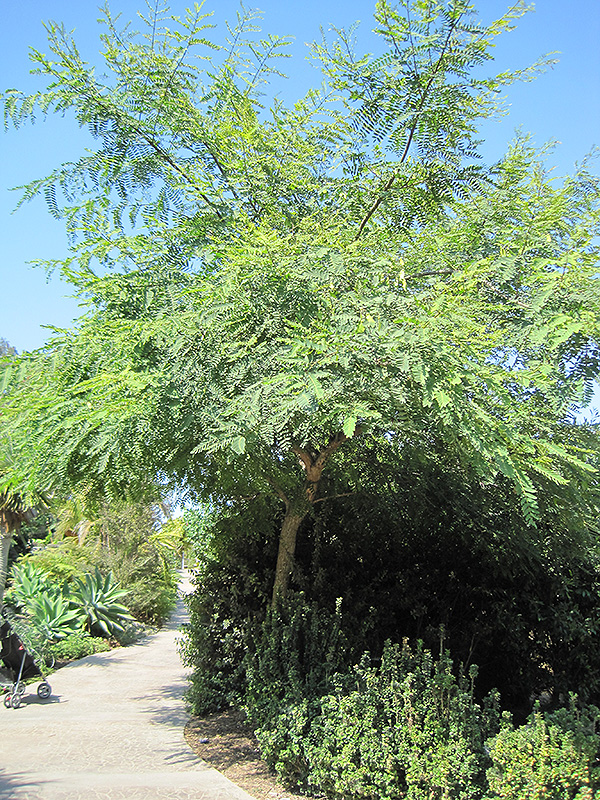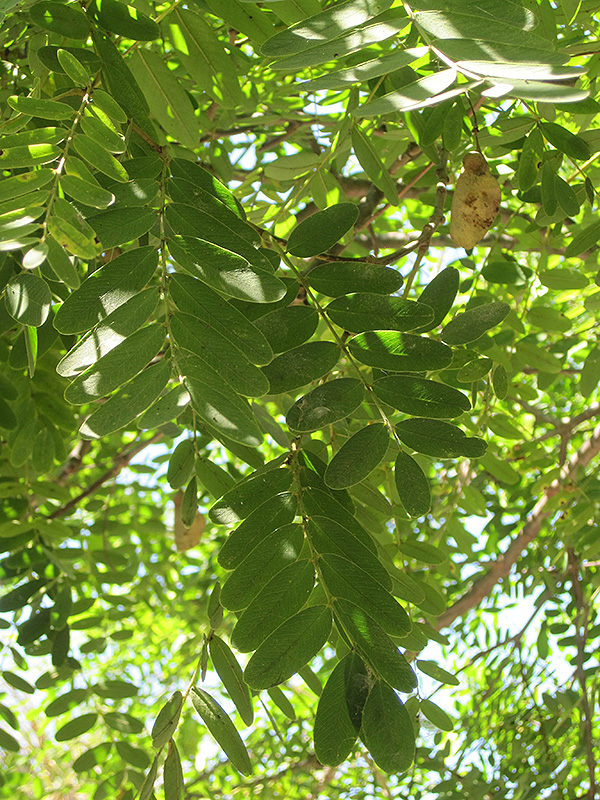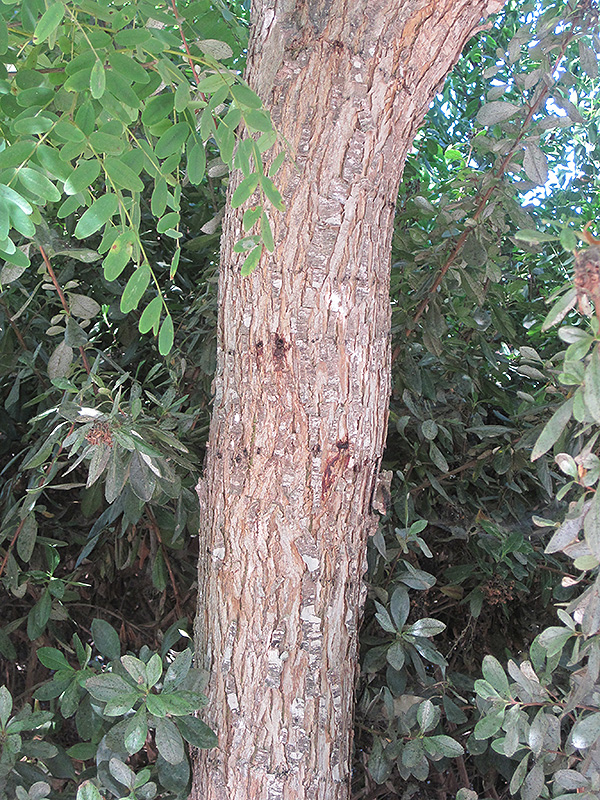Height: 40 feet Spread: 50 feet
Sunlight:
Hardiness Zone: 9a Description: A medium sized semi-evergreen tree for mild climates, featuring showy orange or yellow flowers in summer; small, pinnate leaves gives it a fine texture; has a rounded or spreading habit; good seaside tolerance; litter issue with dropped flowers and fruit Ornamental Features Tipu Tree features showy clusters of yellow orchid-like flowers with orange overtones and brick red throats at the ends of the branches from early to mid summer. It has attractive green deciduous foliage. The small oval pinnately compound leaves are highly ornamental and turn yellow and in fall. However, the fruit can be messy in the landscape and may require occasional clean-up. The furrowed khaki (brownish-green) bark adds an interesting dimension to the landscape. Landscape Attributes Tipu Tree is a deciduous tree with an upright spreading habit of growth. Its relatively fine texture sets it apart from other landscape plants with less refined foliage. This tree will require occasional maintenance and upkeep, and should only be pruned after flowering to avoid removing any of the current season's flowers. It is a good choice for attracting birds, bees and butterflies to your yard. Gardeners should be aware of the following characteristic(s) that may warrant special consideration; Tipu Tree is recommended for the following landscape applications; Planting & Growing Tipu Tree will grow to be about 40 feet tall at maturity, with a spread of 50 feet. It has a high canopy with a typical clearance of 7 feet from the ground, and should not be planted underneath power lines. As it matures, the lower branches of this tree can be strategically removed to create a high enough canopy to support unobstructed human traffic underneath. It grows at a medium rate, and under ideal conditions can be expected to live to a ripe old age of 100 years or more; think of this as a heritage tree for future generations! This tree does best in full sun to partial shade. It is very adaptable to both dry and moist locations, and should do just fine under average home landscape conditions. It is not particular as to soil type, but has a definite preference for acidic soils, and is able to handle environmental salt. It is somewhat tolerant of urban pollution. This species is not originally from North America..![]()
![]()
![]()
![]()
![]()
![]()
![]()
![]()
![]()
![]()
![]()
![]()
![]()
top of page
Louie's Nursery Menifee - Plant Finder
Characteristics
Applications
Features & Attributes
This tool is an online resource representing many of the varieties that we carry over the course of the season, and is intended for informational purposes only. Inventory varies seasonally, so we cannot guarantee that every plant will be in stock at all times - please contact the store directly for current availability. It does not include our entire selection of plants, so be sure to visit our store to see varieties that may not be represented on this list.
bottom of page


